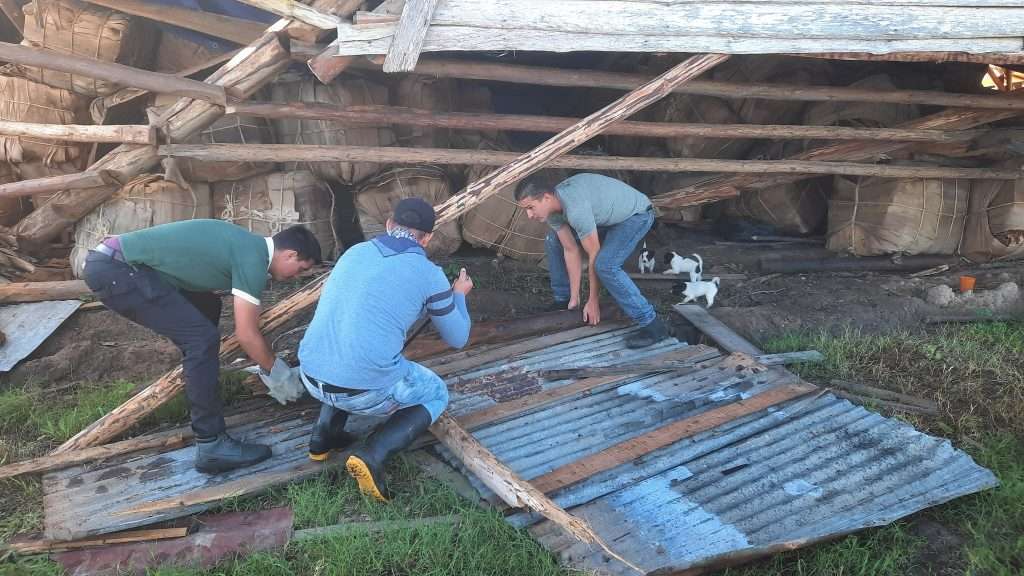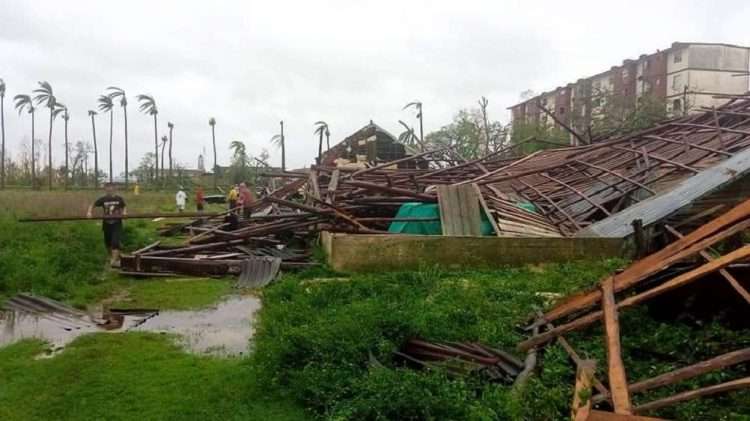The recent passage of Hurricane Ian through western Cuba dealt a “devastating blow” to the cultivation of the most select tobacco produced in the province of Pinar del Río, according to official media on the island.
According to preliminary reports, the territory that produces the largest amount of tobacco in the country, as well as the one with the best quality, suffered major infrastructure damage while losing thousands of tons of raw material.
https://twitter.com/GTabacuba/status/1577084137072365569?ref_src=twsrc%5Etfw%7Ctwcamp%5Etweetembed%7Ctwterm%5E1577084137072365569%7Ctwgr%5Ea96ada60440126b0dcd2c8e0df2b65731727b083%7Ctwcon%5Es1_&ref_url=https%3A%2F%2Foncubanews.com%2Fcuba%2Fproduccion-tabacalera-sufrio-en-cuba-un-golpe-demoledor-con-el-huracan-ian%2F
The hydrometeorological event that touched Cuban territory with category three and winds of up to 200 kilometers per hour caused massive damage “both in tons and in the quality of a crop that contributes hundreds of millions of dollars for exports every year,” a report by the official newspaper Granma said.
The newspaper indicated that the most significant damage was concentrated in the municipalities of San Luis and San Juan y Martínez, where most of the raw material for the manufacture of the famous cigars comes from, one of the most profitable exportable lines of the battered economy of the island.
The delegate of Agriculture in Pinar del Río, Víctor Fidel Hernández, confessed to Granma that “this is the biggest blow that the tobacco infrastructure has suffered throughout its history… Not even when hurricanes Isidore and Lili hit, in 2002, the damage reached such a dimension.”

In the main tobacco-producing region of the country, 90% of the around 12,000 natural cure houses that store leaves for drying have been damaged, according to figures provided by the official.
It also transpired that around 11,000 tons of tobacco, corresponding to the last harvest and that were in those houses, ended up wet, so the work has been focused on “salvaging as many leaves as possible.”
The authorities of the sector in Cuba are now drawing up new strategies to start the 2022-2023 harvest on October 20, considering, among other factors, that Pinar del Río lost practically all the seedbeds that provide the necessary seedlings.
Marino Murillo, president for some time of the Tabacuba business group, explained that for now, the priority is to extract all the protected tobacco in natural curing houses and warehouses, since of the 41,000 tons existing in the nation, 33,000 are in the territory of Pinar del Rio, as indicated by a dispatch from Prensa Latina (PL) news agency.
Murillo assured that to help free these facilities, where what was stored in the fields remained, between 15,000 and 17,000 tons will be transferred to other provinces and the irrigation of seedbeds will be resumed urgently.
The actions of the Pinar del Río tobacco workers, prior to the passage of Hurricane Ian, prevented the 650 tons of covered tobacco intended for the production of the famous cigars from being damaged, said the head of Tabacuba. That wrapper, Murillo said, will be used in the export of cigars of the next semester when the country will have to produce some 50 million cigars.
They are also working to recycle the material that is in good condition in collections, stemming and natural curing houses; and depending on what is achieved in this sense, the area for the new plantations in Pinar del Río will be defined. 15,000 hectares of tobacco will be planted throughout the country.
The notable effects on the Cuban tobacco sector occur at an already delicate time for production, which between January and June of this year was reduced by half of what was planned due to lack of basic supplies, logistical problems and breakdowns, among others, EFE news agency affirmed.
Economic crisis and COVID-19 don’t stop production of cigars in Cuba
The situation has caused “instability” in the “distribution in the retail sales network,” Granma newspaper acknowledged this August.
Tobacco is the fourth largest sector by income in Cuba, and EFE pointed out that its harvest went from 32,000 tons in 2017 to 25,800 in 2020, according to official data. The sector employs around 200,000 workers, rising to 250,000 at the peak of the harvest.
EFE/OnCuba










